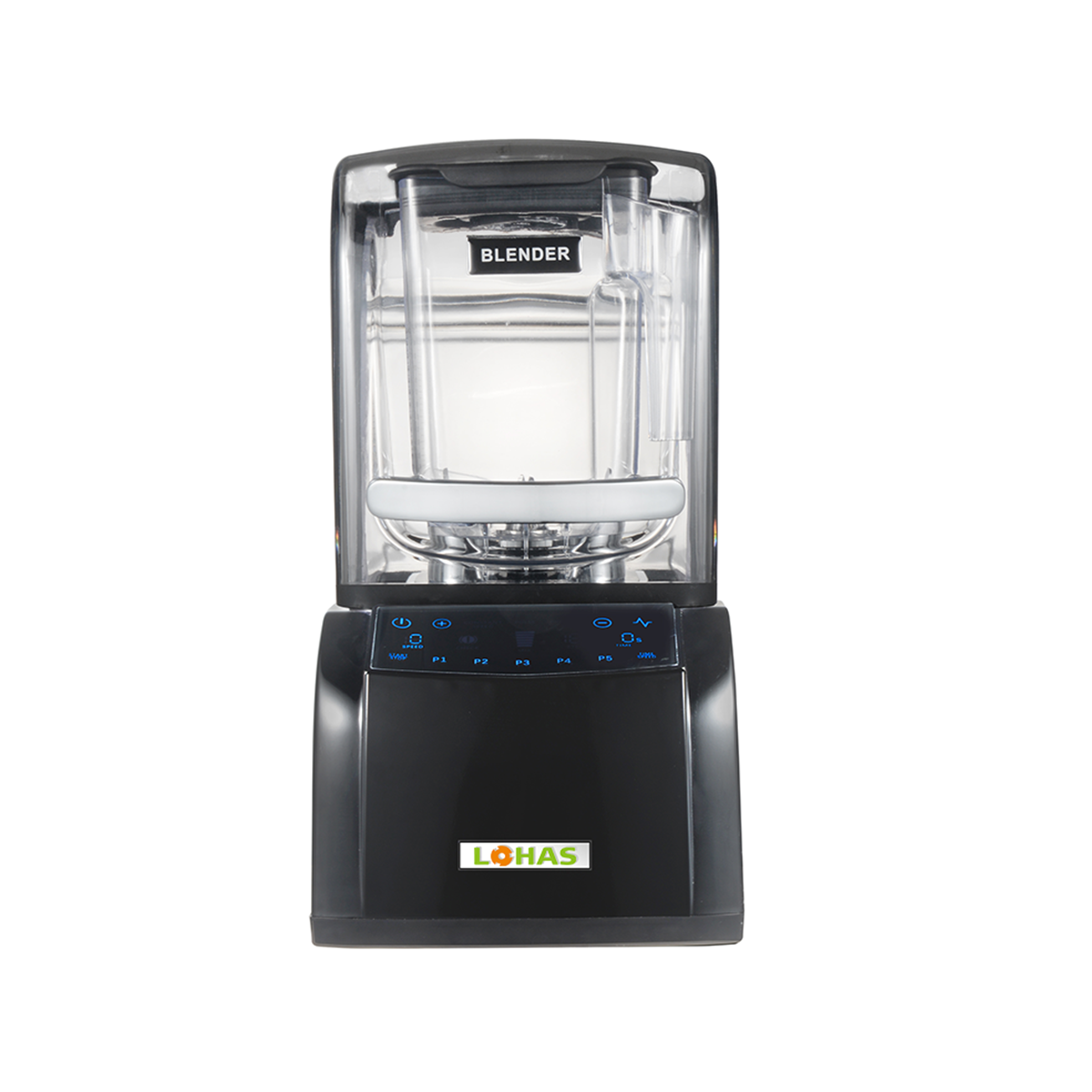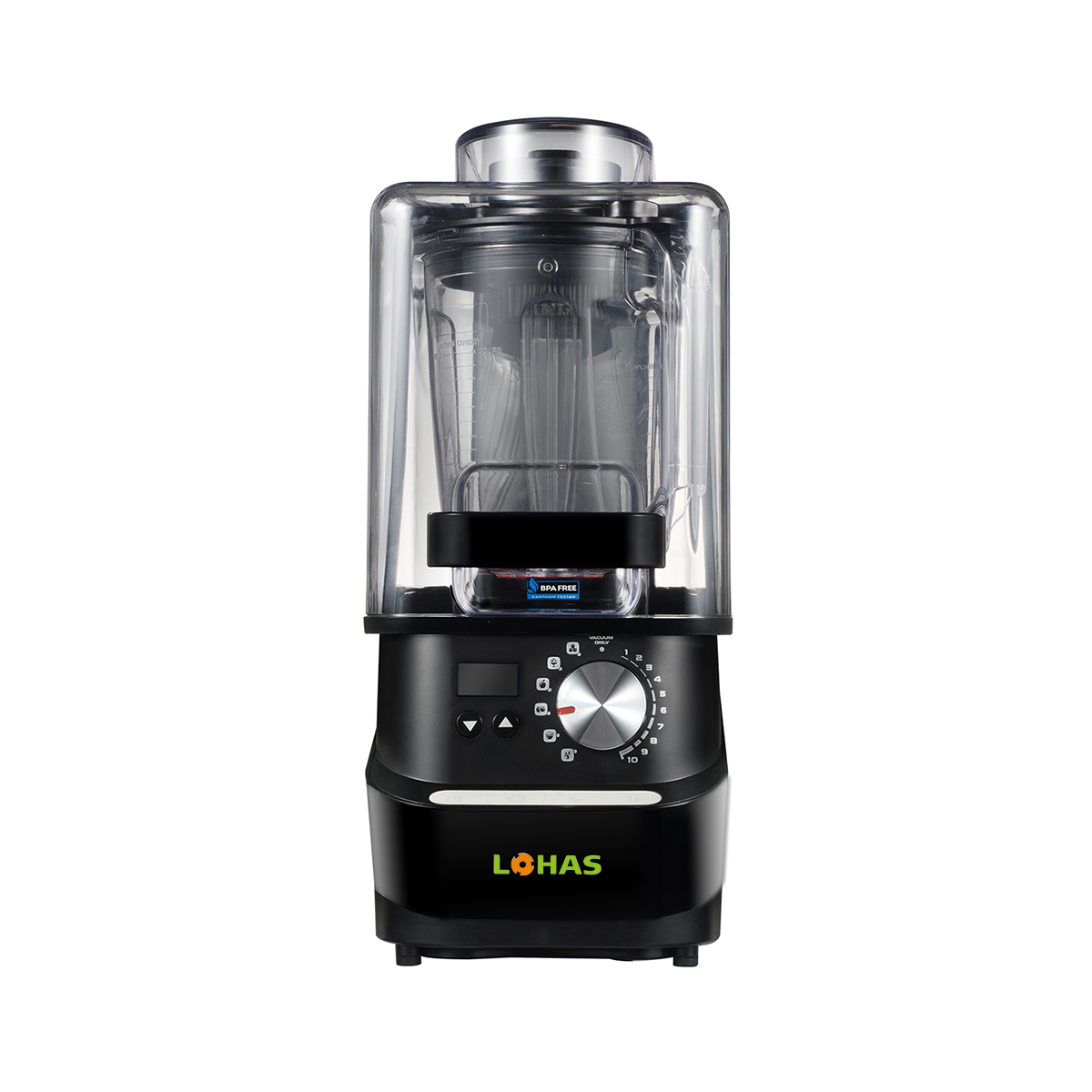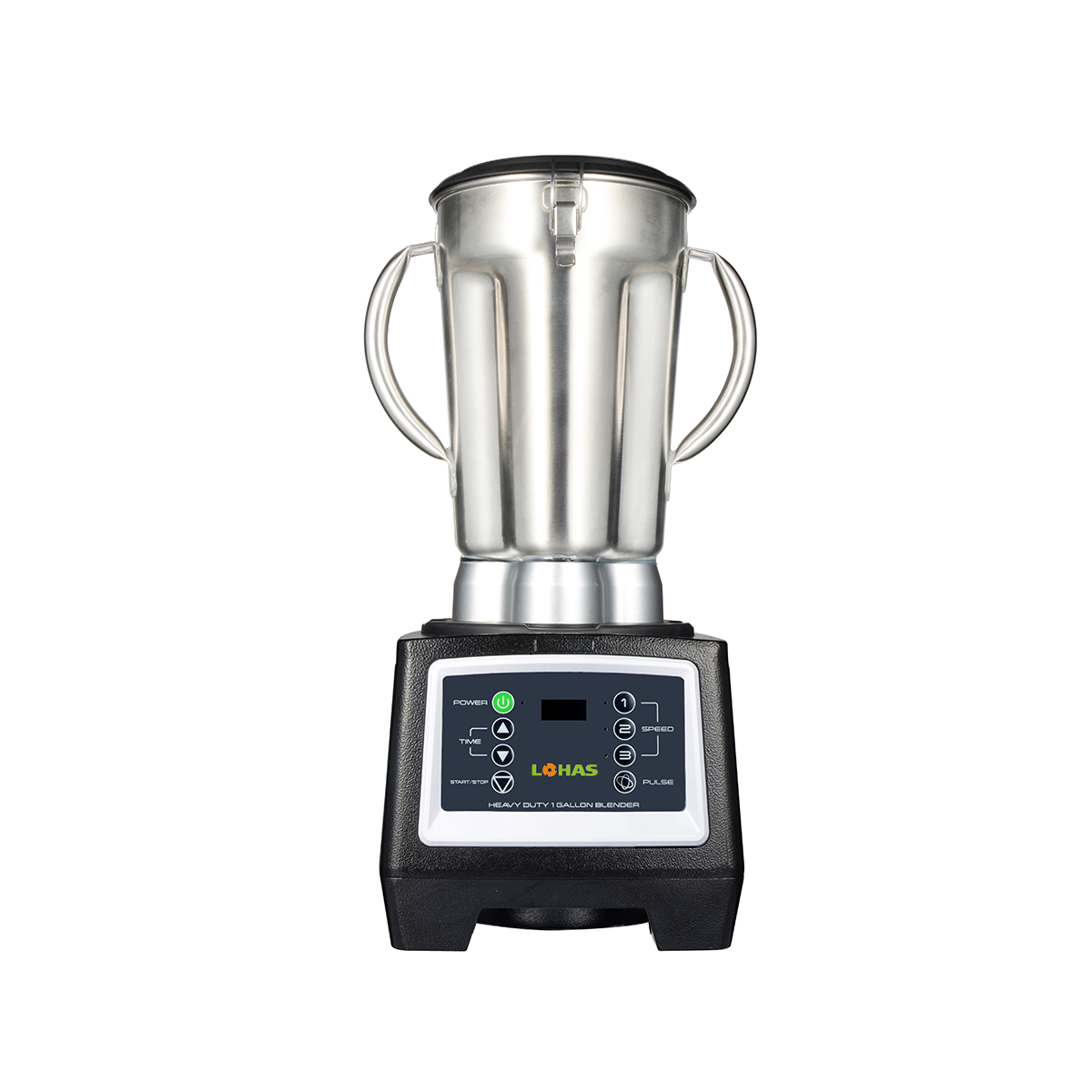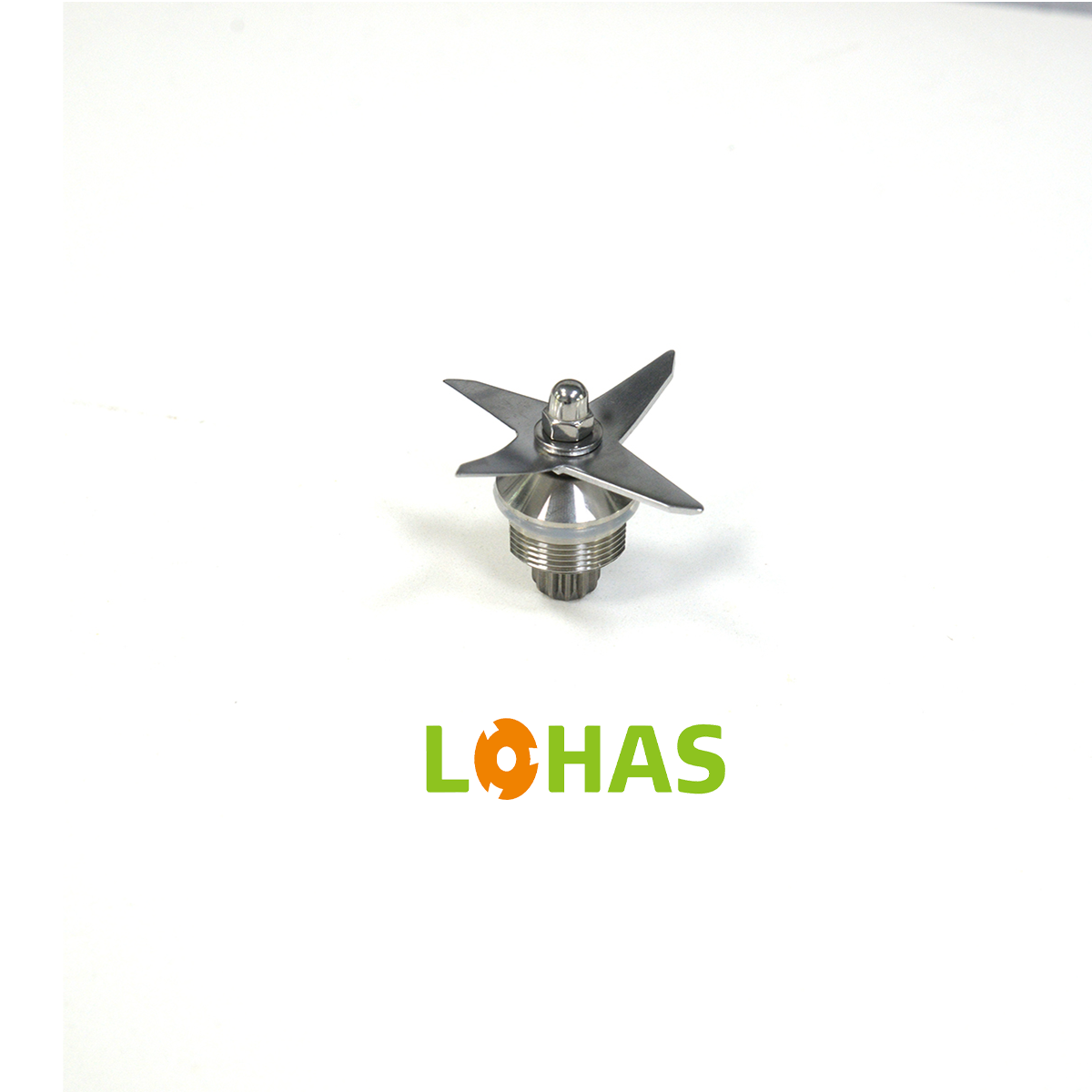שימוש מסחרי לעומת שימוש ביתי: הבדלים עיקריים
בעת בחירת מח_MIXר, חשוב להבין את ההבדלים בין מודלים מסחריים בית למודלים ביתיים. מח_MIXרים ביתיים הם בדרך כלל פחות עוצמתיים, ונועדו למשימות קלות יותר כמו הכנת שיקי ערבית מזדמן. להשוואה, מח_MIXרים מסחריים כגון Blendtec בנויים לשימוש כבד, ומסוגלים להתמודד עם כמויות גדולות יותר וחומרים קשיחים יותר כמו קרח ואגוזים. למשל, Vitamix, שנחשב למועדף לשימוש ביתי, מציע בדרך כלל וואטאז' נמוך בהשוואה למנועים תעשייתיים של מודלים מסחריים. הבחנה זו היא קריטית שכן היא קובעת את התאימות של המח_MIXר ליישומים שונים. גורמים כגון עמידות, קלות שימוש וגיוון שימושים נוטים להשתנות בצורה משמעותית בין המודלים הללו, וכך משיגים לצרכים הספציפיים של קבוצות צרכנים שונות.
התמודדות עם חומרים קשיחים (קרח, אגוזים, ירקות סיביים)
החשיבות של מח_MIXר במהירות גבוהה
במטבח המודרני של ימינו, מח_MIXר מקשה מהירה כבר לא נחשב למותרות אלא למכשיר חיוני. החל מהכנת שייקים ומיצים טריים ועד ריסוק קרח וטחינת אגוזים, הרבגוניות של בלנדר במהירות גבוהה היא ללא תחרות. בניגוד לבלנדרים רגילים, בלנדר במהירות גבוהה מציע עוצמת מנוע גדולה יותר, טכנולוגיית להבים חדה יותר ועמידות לאורך זמן. זו הסיבה שאנשים רבים פונים למדריך קנייה מפורט לבלנדר במהירות גבוהה: מה לחפש לפני ביצוע הרכישה. על ידי ביצוע מדריך קנייה אמין לבלנדר במהירות גבוהה: מה לחפש, צרכנים יכולים לבחור בביטחון מוצר שלא רק יתאים לצרכים היומיומיים שלהם אלא גם מספק ביצועים יוצאי דופן לשנים הבאות.
כוח וביצוע
שקול עוצמת המנוע
אחת הנקודות הראשונות שמובלטות בכל מדריך לקניית בלנדרי מהירות גבוהה: מה לבדוק זה עוצמת המנוע. מנוע חזק מבטיח שאפשר יהיה לערבב חלקים קשיחים כמו פירות קפואים, קרח ואגוזים בצורה חלקה ובלי מאמץ. חוסר בעוצמת מנוע לרוב גורם לטקסטורות לא אחידות ולתוצאות ערבוב ירודים, מה שמעצבן כשחומרת התוצאה חשובה. בחירה בבלנדר במהירות גבוהה עם מנוע עמיד וחזק תורמת ישירות לתוצאות טובות יותר ולחיסכון בזמן ההכנה.
מהירות ואפשרויות בקרה
גורם חשוב נוסף בכל מדריך לקניית בלנדרי מהירות גבוהה: מה לבדוק זה זמינות של הגדרות מהירות שונות ואפשרויות בקרה. מספר מהירויות מאפשר גמישות רבה יותר, ונותן למשתמשים את היכולת להכין הכל ממיץ חלק ועד סלסה גסה. פונקציות פולס מספקות שליטה נוספת, ומאפשרות לשבש חלקים בפעימות קצרות. בעת הערכת תכונות אלו, חשוב לשקול כמה פעמים באמת נדרשת דיוק לעומת כוח גס.
טכנולוגיית להט
חומר וחדות
להטים מילאים תפקיד מרכזי במדריך הקנייה של שיקוי מהיר: מה להבחין בו. לרוב מעדיפים להטים מפליז אל חלודה באיכות גבוהה מכיוון שהם עמידים בפני שזיפה ומשמרים את החדות שלהם לאורך זמן. להטים עכורים או בעלי עיצוב לקוי לא רק שפוחתים את הביצועים אלא גם עלולים להעמיס על המנוע. להטים חדים וחזקים מובילים לפירוק יעיל של המצרכים ומבטיחים טקסטורות חלקות יותר בפרק זמן קצר.
עיצוב ועומס הלהט
מדריך מפורט לקניית שיקוי מהיר: מה לבדוק לעיצוב להטים. להטים בעלי זוויות מרובות או צורות מיוחדות מסוגלים ליצור סופות טובות יותר, ופולשים את המזון לכיוון הלהטים לצורך ערבוב יעיל יותר. גם העמידות חשובה; מערכות להט רופפות עשויות להיבהל במהרה בשימוש כבד. על הצרכנים לבדוק תמיד האם השיקוי משתמש בבניית להט חזקה שתומכת בביצועים לאורך זמן.
2
בחירת הגודל הנכון
היבט מרכזי נוסף של מדריך לקניית משחזר במהירות גבוהה: מה לבדוק זה נפח הבקבוק. הגודל הנכון תלוי בצרכים של הבית. בקבוקים גדולים מתאימים למשפחות או לאלו שמעדיפים להכין מספר מנות בבת אחת, בעוד שבקבוקים קטנים אידיאליים למינון יחיד ולמטבחים קומפקטיים. בחירת הנפח המתאים מבטיחה יעילות ללא נפח מיותר.
אפשרויות חומר ואיכות
חומרי בקבוק כוללים לרוב פלסטיק, זכוכית, ובמקרים מסוימים טריטן. לכל אחד היתרונות שלו. בקבוקי פלסטיק קלי משקל וחסיני שבירה, בעוד שבקבוקי זכוכית עמידים לשריטות ולריחות. בקבוקי טריטן משלבים עמידות עם בטיחות, הם חסרי BPA ועמידים לפגיעות. מדריך מקיף לקניית משחזר במהירות גבוהה: מה לבדוק יזכיר للمקנים כי בחירת החומר הנכון חשובה בדיוק כמו הגודל, שכן היא משפיעה הן על הבטיחות והן על חוויית המשתמש.
קלות שימוש ותחזוקה
בקרת משתמש ידידותית
אין מדריך לקניית ערבוב מהיר: מה לחפש יהיה שלם מבלי לדון בפשטות השימוש. שליטה אינטואיטיבית ותוויות ברורות הופכות את הערבוב לקל יותר, גם למתחילים. שליטה מסובכת עשויה להפריע למשתמשים ולהוביל לשגיאות בהכנה. פשטות לרוב פירושה תוצאות עקביות יותר.
ניקוי וטיפול
התפעול מילווה תפקיד חשוב בסיפוקיות מהמוצר. מדריך לקניית ערבוב מהיר: מה לחפש צריך להדגיש את חשיבות תכונות ניקוי קלות, כמו להבים ניתנים להסרה או כדים שמתאימים למכונת כבסת הכלים. מאחר שערבוב של מרכיבים דביקים או שומניים עלול להשאיר שאריות, רכיבים שמנוקים בקלות מביאים עימם היגיינה ו편ות פעולה.
עמידות ותוקף האחריות
איכותאיכות איכויות
עיקשות היא אחת התכונות החזקות ביותר במדריך לקניית ערבוב מהיר: מה לחפש. חומרים מדרגת גבוהה במנוע ובכד הערבוב עצמם מבטיחים נצחאות. ערבובים שמיוצרים מחלקים חלשים נכשלים לרוב תחת הלחץ של שימוש תכוף. בניה יציבה מגינה על הרכישון שלך ומבטיחה תפעול נצחי.
הבטחה והסעד לקוחות
לא פחות חשוב הוא האחריות. מדריך רכישה אמין לטחנה מהירה: מה לחפש יציין כי תקופות האחריות הארכות לרוב משקפות ביטחון באיכות המוצר. גם התמיכה הלקוחות תורמת לשביעות רצון לאורך זמן. על הקונים תמיד לבדוק את תנאי האחריות כדי לוודא כיסוי מתאים במקרה של תקלות.
מחיר וערך
איזון תקציב לתכונות
המחיר הוא לעתים קרובות הגורם שמכריע, וכל מדריך לקניית בלנדרי מהירות גבוהה מתייחס לאיזון הזה. אם כי מפתה לבחור באפשרות הזולה ביותר, חשוב לשקול את הערך ארוך הטווח. השקעה ראשונית מעט גבוהה יותר עשויה להביא שנים של ביצועים אמינים, בעוד שבלנדר זול יותר עלול להידרש להחלפה מוקדם יותר.
זיהוי הערך האמיתי
ערך אמיתי נובע משילוב של עמידות, ביצועים וקלות שימוש. מדריך לקניית בלנדר במהירות גבוהה: מה לבדוק מדגיש שהדגם הזול ביותר אינו תמיד הבחירה החסכונית ביותר לאורך זמן. על ידי השוואת תכונות مقابل מחיר, הצרכנים יכולים למצוא דגם המספק את האיזון הנכון.
תכונות נוספות
מפלס רעש
מדריך לקניית בלנדר במהירות גבוהה: מה לבדוק עשוי גם להזכיר רעש. מאחר שהמכשירים הללו הם עשירי כוח, רמות הרעש יכולות להשתנות בצורה משמעותית. חלק מהעיצובים כוללים חיפויי שמע או בידוד כדי להפחית את ההפרעה, מה שחשוב במיוחד במטבחים פתוחים או במרחבים משותפים.
אביזרים ופונקציות נוספות
לבסוף, רבים ממאמרי מדריך לקניית בלנדר במהירות גבוהה: מה לבדוק מדגישים אביזרים כגון כוסות לנשיאה, כלים לדחיסה או הגדרות ערבוב מתוכנתות מראש. התוספות האלה מגבירות את הwersatility והנוחות, והופכות בלנדר פשוט למכשיר רב-תכליתי המתאים למשימות שונות.
שאלות נפוצות
מה ההבדל בין שיקוי מהיר לשיקוי רגיל
שיקוי מהיר משתמש במנוע חזק יותר ובטכנולוגיית להט מתקדמת בהשוואה לשיקוי רגיל. זה מאפשר לו לשבור קרח, לערבב מרכיבים קשיחים וליצור kếtנים חלקים יותר בצורה יעילה יותר.
כמה זמן אמור שיקוי מהיר לשרת
עם טיפול ושימור מתאימים, שיקוי מהיר יכול לשרת anywhere בין חמש לעשר שנים, בהתאם לאיכות הבנייה ותדירות השימוש. בחירה במודל עמיד עם אחריות טובה מגדילה את תוחלת החיים שלו.
האם גודל המיכל חשוב כש man קונים שיקוי מהיר
כן, גודל המיכל חשוב בהתאם לסגנון החיים שלך. מיכלים גדולים שימושיים למשפחות או לבישול בכמויות, בעוד שמיכלים קטנים מתאימים לאנשים בודדים או לאלה שיש להם מעט מקום.
האם כל שיקויי המהירות הגבוהה מגיעים עם הגדרות מהירות מרובות
לא כל המודלים מציעים את אותו טווח של הגדרות מהירות. יש כאלה שמציעים רק בקרות בסיסיות, בעוד שאחרים מציגים מהירויות מרובות ופונקציות פולס לגוון גדול יותר.







